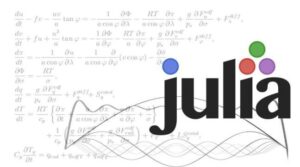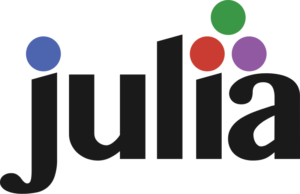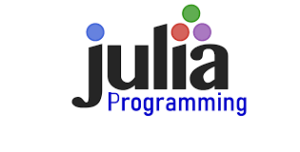The Julia programming language is making waves in the tech world. It’s known for being super fast and easy to use. If you’re curious about coding, the Julia programming language might be a great place to start. It helps you write programs quickly and solve complex problems with ease.
In this blog post, we will explore the basics of the Julia programming language. You’ll learn why it’s popular and how it can help you with your projects. Let’s dive into the exciting world of Julia and see what makes it so special!
What is the Julia Programming Language?
The Julia programming language is a special tool used for writing computer programs. It is known for being very fast, which means it can run tasks quickly. People who work with numbers and data often use Julia because it helps them solve problems faster than many other languages.
When you use the Julia programming language, you write instructions that the computer can understand. These instructions help you create software or analyze data. It’s like giving the computer a list of steps to follow, and Julia makes sure it follows them very quickly.
Julia is designed to be easy to learn. Even if you are new to programming, you can start with Julia and create amazing projects. Its speed and simplicity make it a popular choice for many people who love coding.

Why Choose Julia Programming Language?
Many people choose the Julia programming language because it is both fast and easy to use. If you need to do complicated math or work with big amounts of data, Julia can handle it with ease. This makes it a great choice for scientists and engineers.
Julia is also great because it helps you write code that runs quickly. This means your programs won’t take forever to finish. It’s perfect for projects where you need fast results, like analyzing data or creating simulations.
Another reason to choose Julia is its growing community. There are many people who use Julia and share their knowledge. This means you can find lots of help and resources online to learn and get better at using Julia.
Getting Started with Julia Programming Language
Getting started with the Julia programming language is easy and fun. First, you need to download Julia from the official website and install it on your computer. This is the first step to start writing your own Julia programs.
Once you have Julia installed, you can begin exploring its features. There are many tutorials and guides available that can help you learn the basics. You can start by writing simple programs and gradually move on to more complex projects as you get comfortable.
Practicing with Julia will help you get better at programming. Don’t be afraid to experiment and try new things. With time and practice, you’ll be able to use Julia to create amazing projects and solve problems efficiently.
Key Features of the Julia Programming Language
One of the key features of the Julia programming language is its speed. Julia is designed to run programs quickly, even if they are complex. This is very useful for tasks that require a lot of computing power.
Another important feature is Julia’s ability to handle large amounts of data. It can process and analyze big datasets without slowing down. This makes it ideal for data scientists who need to work with large numbers.
Julia is also known for its ease of use. The language is designed to be simple and easy to understand. You don’t need to be an expert to start using Julia. It’s user-friendly and helps you get your work done faster and more efficiently.
How Julia Programming Language is Different from Others
The Julia programming language is different from many other languages because it combines speed and simplicity. Unlike some languages that are either fast but hard to learn or easy but slow, Julia offers the best of both worlds.
Julia’s unique design allows it to perform tasks quickly without making programming difficult. This means you can write code that runs fast without needing a lot of complicated instructions. It’s a big advantage for programmers who want efficiency and simplicity.
Another way Julia is different is its focus on mathematical computations. It is specially built to handle complex math problems and large datasets, making it a favorite among people who work with numbers and data.
Simple Projects to Try with Julia Programming Language
If you’re new to the Julia programming language, starting with simple projects can be a great way to learn. One fun project is to create a basic calculator. This will help you understand how to write and run Julia code.
Another easy project is to analyze some data. You can use Julia to look at simple datasets and perform calculations. This will give you hands-on experience with Julia’s data processing features.
As you get more comfortable, you can try building more complex projects, like a basic game or a small simulation. These projects will challenge you and help you learn more about the Julia programming language.

Learning Resources for Julia Programming Language
There are many resources available to help you learn the Julia programming language. You can start with online tutorials and videos that teach you the basics. These resources are great for beginners and will guide you through the first steps of learning Julia.
Books and guides about Julia are also helpful. They often provide detailed explanations and examples to help you understand how to use Julia effectively. You can find these books in libraries or online.
Joining online communities and forums can be another way to learn. These communities have experienced Julia users who can answer your questions and give you advice. Being part of a community helps you stay motivated and learn from others.
Common Mistakes in Julia Programming Language and How to Avoid Them
When learning the Julia programming language, it’s easy to make mistakes. One common mistake is not using the correct syntax. Julia has specific rules for writing code, and following these rules is important for your programs to work correctly.
Another mistake is not testing your code regularly. It’s a good idea to run your programs in small steps to catch errors early. This way, you can fix problems before they become too big.
To avoid mistakes, make sure to read the documentation and follow tutorials closely. Practice and patience are key to getting better at using Julia. The more you practice, the fewer mistakes you’ll make.
Real-World Applications of Julia Programming Language
The Julia programming language is used in many real-world applications. Scientists and researchers often use Julia to analyze data and create simulations. Its speed and efficiency make it a powerful tool for these tasks.
Julia is also used in finance and economics. Professionals in these fields use Julia to perform complex calculations and analyze financial data. Its ability to handle large datasets is very valuable in these industries.
Another area where Julia is used is in artificial intelligence and machine learning. Developers use Julia to build and train models that can learn from data and make predictions. It’s a versatile language that adapts well to different types of projects.
Julia Programming Language for Beginners
If you’re a beginner, the Julia programming language is a great choice to start learning. Its simple syntax makes it easier to understand than some other languages. You don’t need to have a lot of experience to begin coding with Julia.
Starting with basic projects will help you get familiar with Julia. As you practice, you’ll learn more about how the language works and how to use it effectively. There are many resources available to guide you through your learning journey.
As you become more confident, you can take on more challenging projects. Julia’s versatility means you can use it for a wide range of applications, from simple tasks to complex problems.
Future of the Julia Programming Language
The future of the Julia programming language looks bright. It is gaining popularity among programmers and researchers because of its speed and ease of use. Many people are excited about its potential and are contributing to its growth.
As technology advances, Julia is likely to become even more powerful. Developers are constantly working on new features and improvements to make Julia better. This means that the language will continue to evolve and adapt to new challenges.
In the future, Julia could be used in even more areas of technology and science. Its ability to handle complex problems quickly makes it a valuable tool for many different fields.

Julia Programming Language: Tips and Tricks
To make the most of the Julia programming language, it helps to know some tips and tricks. One useful tip is to learn about Julia’s built-in functions. These functions can save you time and help you write code more efficiently.
Another trick is to use Julia’s interactive mode. This mode allows you to test code snippets and see results instantly. It’s a great way to experiment and learn quickly.
Keeping your code organized is also important. Use comments and clear variable names to make your programs easier to read and understand. Good practices like these will help you become a better Julia programmer.
Conclusion
The Julia programming language is a fantastic tool for both beginners and experts. It’s fast, easy to learn, and perfect for working with numbers and data. Whether you’re just starting out or looking to take your coding skills to the next level, Julia offers many benefits that can help you succeed.
By exploring Julia and practicing with simple projects, you’ll quickly see how powerful and useful it can be. Keep learning and experimenting with Julia, and you’ll find yourself creating amazing programs and solving complex problems with ease. Happy coding!